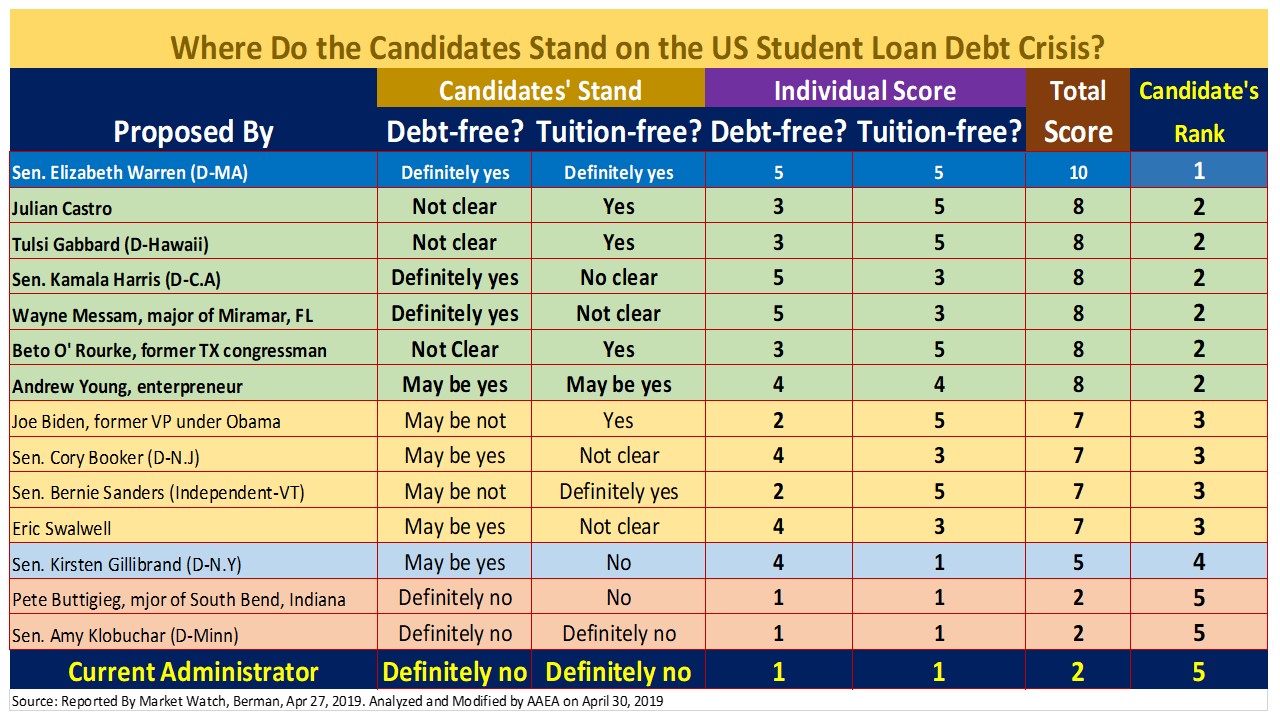 Given the published data shown above, the Association has analyzed where each candidate’s stand on solving US student loan Debt. Translating from what each candidate has said into different scores, we hope to rank them and share the information to the American public. Before we go further let us critically think what a public policy can and cannot do to solve any particular problem. Understanding logically on the problems will help to avoid making unnecessary discussions or debate. It does not mean that the American public cannot discuss this big issue. Rather, to do it efficiently and purposely.
Given the published data shown above, the Association has analyzed where each candidate’s stand on solving US student loan Debt. Translating from what each candidate has said into different scores, we hope to rank them and share the information to the American public. Before we go further let us critically think what a public policy can and cannot do to solve any particular problem. Understanding logically on the problems will help to avoid making unnecessary discussions or debate. It does not mean that the American public cannot discuss this big issue. Rather, to do it efficiently and purposely.
As the Association has published many articles on this issue, then it will be easier for the American public to understand the root of the problems. Basically there are 2 culprits that cause all this crisis: (1). Skyrocketed college cost and (2). Systematic errors purposely induced into the system. No one can solve the US student loans issue until these two elements are understood and then eliminated.
In the applied econometrics or statistical world, the sources of standard deviation or variance can be classified into 2 groups: random and systematic. Because the opportunities to make money are widely opened in this $1.5 trillion industry, then everyone is trying to get a piece out-of it. From lending institutions to loan servicing organizations and others. Because the interests of each institutions may not be the same, except to make as much money as possible, then each one of them is trying to induce or twick the system for they own benefits. If there are 10 entities involving in the system then potentially there will be 10 sources of systematic errors. Because these errors are unique to the institution that brought it in, then there is a small opportunity for other entities or outsider to change that. For example, the DOE is hardly check if the loan servicing company is operating under DOE’s guidelines.
Will continue to part II.
